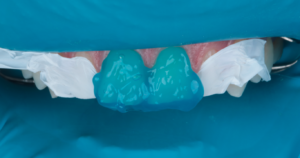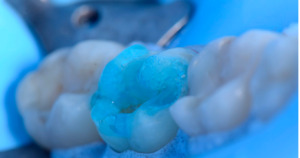Author: Dr. Felipe Pinto Paredes Rodrigues
The search for quality adhesion in odontology has been the theme of many academic debates, being it of vital importance for the professional dentist to be successful in direct or indirect restorative procedures. The phosphoric acid etching of the substrate previously to restorations or cementations allows for a better quality in the adhesion between the tooth and the restorative material.

Image 1: Clinical case – Dr. Pedro Alexandre

Image 2: Clinical case – Prof. Dr. Fábio Sene
The phosphoric acid works in different ways when we compare its action on the enamel and on the dentin. On the enamel, it creates porosities on the surface, by means of a demineralization process, allowing, therefore, for the penetration of the adhesive. On the other hand, on the dentin, it is responsible for the removal of the smear layer, for the enlargement of the dentin tubules and for the exposure of the network of collagen fiber. The whole process, associated with the use of an adhesive system, is concluded with the formation of the hybrid layer, which is responsible for bonding the adhesive to the tooth.
With the introduction of the universal adhesive systems, such as Ambar Universal APS by FGM, that acid etching may be carried out in a selective way, only on the enamel, in order to improve adhesion and to reduce the risk of a patient’s development of dentin hypersensitivity after restorations or cementations.
That way, the use of the phosphoric acid has a unique role in the treatment protocol, because it is the procedure that allows for the adhesion process to happen effectively without the need to remove large dental structures.
One great example is FGM’s Condac 37 phosphoric acid: a product that is easy to apply and remove used for enamel and dentin etching.







